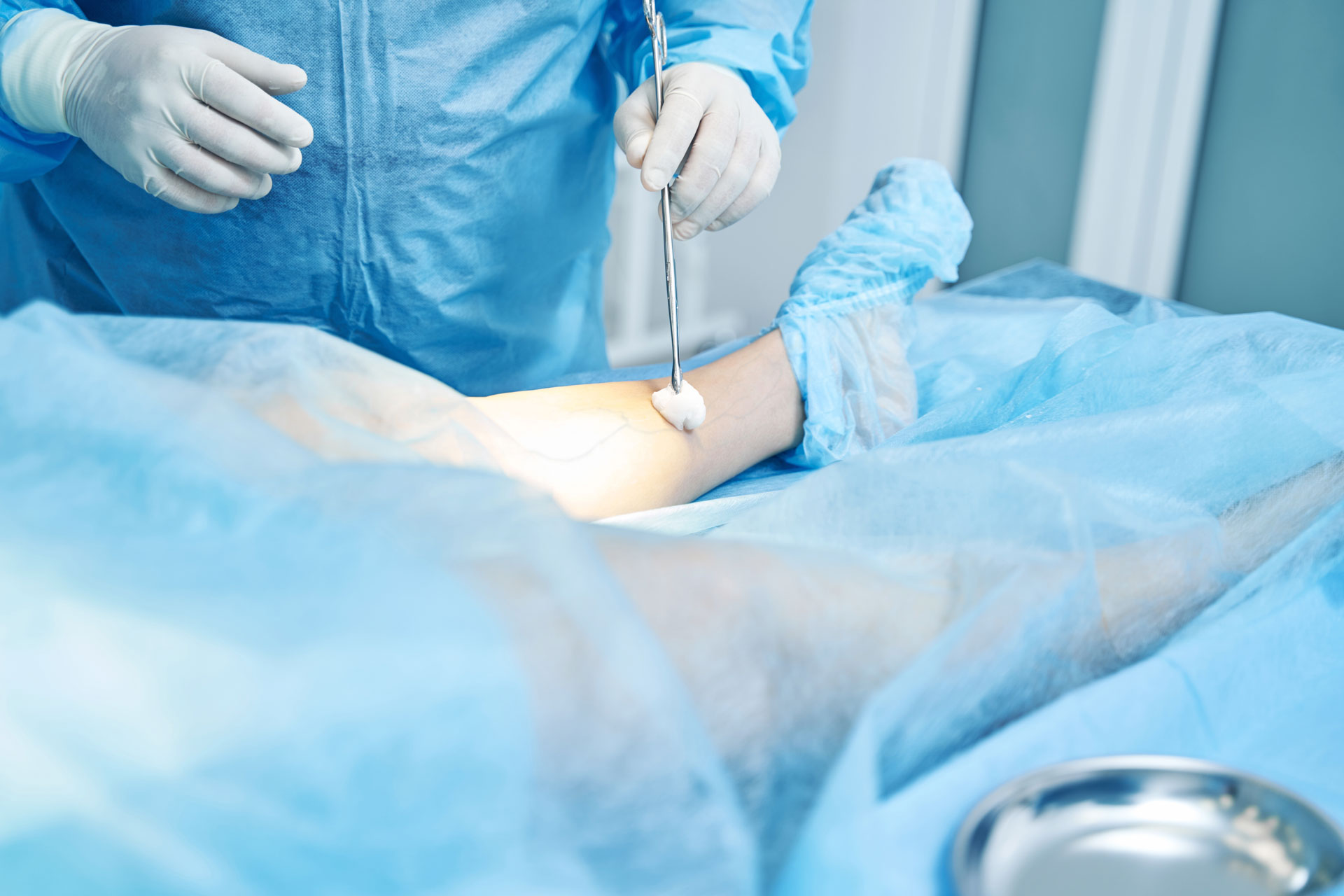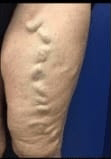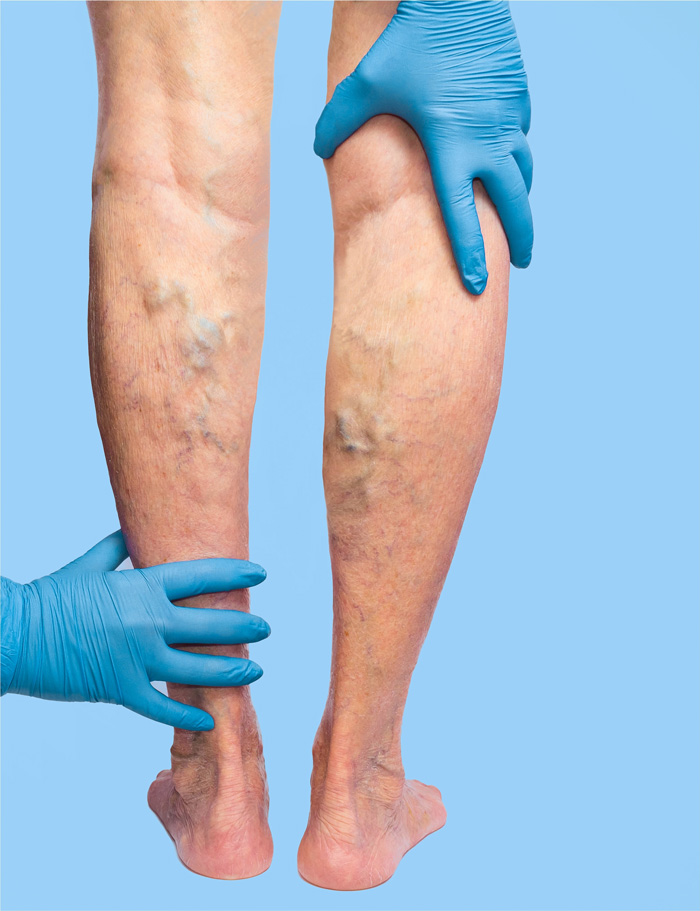
Ambulatory Phlebectomy
In Traverse City & Cadillac, MI
What Is Ambulatory Phlebectomy Treatment?
Ambulatory phlebectomy is a method of surgical removal of surface varicose veins. The area surrounding the varicose vein clusters is flooded with anesthetic fluid. A needle is then used to make a puncture next to the varicose vein and a small hook is inserted into the needle hole and the varicose vein is grasped and removed. The punctures typically leave nearly imperceptible scars. After the vein has been removed by phlebectomy, a bandage and/or compression stocking is worn for a short period.


Who Is A Good Candidate For An Ambulatory Phlebectomy?
Phlebectomy is an excellent option for patients with large, ropy veins at or near the surface of the skin. This option offers superior cosmetic results, typically in one setting that may take multiple visits with other options with other techniques such as sclerotherapy. Patients who need to be on blood thinners and patients with deeper veins or patients with abundant loose skin such as after significant weight loss may be better served by other treatments.
Benefits Of Ambulatory Phlebectomy
A Microphlebectomy is an excellent procedure for removing bulging varicose veins quickly and efficiently. Because we remove the affected vein completely, all of the associated symptoms are eliminated immediately. These procedures are typically very well tolerated and are done under local anesthetic here in the office. The veins are actually removed through needle punctures as opposed to incisions and thus no sutures are needed and patients typically return to normal the next day. Most patients report post-op pain as only being a 2 or 3 on a 1-10 scale and they typically only need to take over-the-counter pain medications for a day or two. In contrast to foam sclerotherapy, a large area can be treated in a single session with a phlebectomy where it would take multiple visits to treat similar veins with sclerotherapy.

MEET Dr. Brian Heeringa, Board Certified
Dr. Heeringa is a Board certified General Surgeon, a Fellow of the American College of Surgeons and a Diplomate of the American Board of Venous and Lymphatic Medicine. He and his team treat a broad spectrum of venous conditions ranging from spider veins to varicose veins to venous ulcers and everything in between. We also offer DVT risk assessment and can help manage post thrombotic syndrome. Call today to find out how our team can help you.
How Do I Prepare For My Ambulatory Phlebectomy?
There really isn’t any preparation necessary for these procedures other than showering prior to showing up for your procedure. You’ll need to wear compression stockings afterward for two weeks, so you’ll want to purchase these beforehand. Since only local anesthesia is necessary, you don’t have to worry about fasting prior to your treatment. Many patients drive themselves to and from the appointment. For patients who are anxious, an anxiolytic may be prescribed if desired.
How Is Ambulatory Phlebectomy Performed?
For the phlebectomy procedure, the physician will mark out the varicose veins with the patient standing. Then, when the patient is laying down, a dilute numbing medicine or tumescent anesthesia is infiltrated into the skin and around the veins. The doctor will then use a needle to make tiny holes adjacent to the marked veins and then remove the veins through these needle holes.
Ambulatory Phlebectomy Recovery
After the procedure, the patient will have his or her leg wrapped with compression bandages which will be left on for 24 hours, and after that the patient can switch back to compression stockings which are to be worn daily for the next two weeks. Most patients are able to go back to work the following day and typically need nothing more than over-the-counter medicine for pain such as Tylenol or ibuprofen.
How Long After An Ambulatory Phlebectomy Can I Start Exercising Again?
Amazingly, you can walk the same day as your treatment and you are encouraged to remain active. You can use an elliptical, walk more, or ride a bike within two days, in most cases. Don’t overdo it, though. You should hold off on strenuous exercise and any moderate to heavy lifting for two weeks. Patients usually return to work the next day.
Phlebectomy Alternative Treatment Options
Alternatives would be sclerotherapy or foam sclerotherapy but that often would require multiple sessions, sometimes over several months.
Risks Of Ambulatory Phlebectomy
Like the other treatments offered here at Northern Michigan Vein Specialists, complications are rare and typically minor. Risks include bleeding, bruising, numbness and tingling. As with any procedure, it is important to discuss potential risks and benefits with your physician beforehand.
